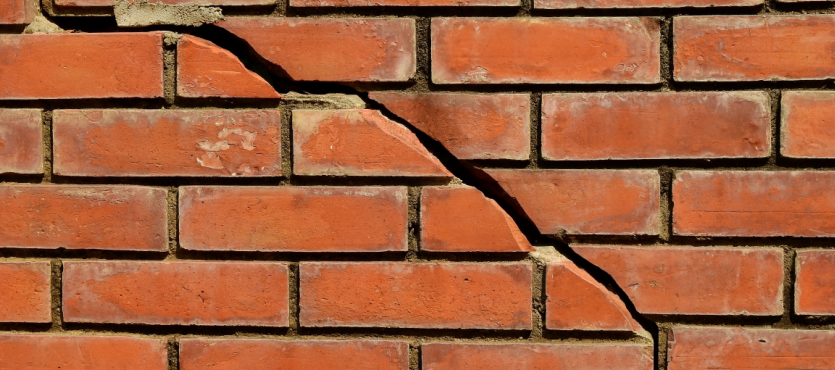Brick is a timeless material that provides an aesthetic option for building a study and a long-lasting home. Although you might think that brick is invisible and unlikely to need any repairs or maintenance, properly caring for your brick house will ensure it lasts as long as it possibly can.
That said, while brick is exceptionally resistant, it is still prone to natural wear over time in the form of cracking, which can happen for many reasons and in several different ways. Failing to address these problems can lead to serious compromises in the structural integrity of your home, so finding them and fixing them is vital. Here are several signs to keep an eye out for that can help you identify when cracked brick walls become a real problem.
Why Bricks Crack?
- Soil Settlement – Every time a foundation is built, the excavation of the soil has to come first before construction can begin. Over time, the ground will gradually settle and move, causing cracks in your brick walls to form. If you live in a disaster-prone area—earthquakes, hurricanes, floods, etc.—then the ground around your home may settle more drastically and further affect your home.
- Deterioration and Corrosion – Like most things, brick is still vulnerable to deterioration and corrosion over time. This can happen because of weather, poor maintenance, and even gravity from all the weight of your brick home weighing down upon itself. Whatever the reason, cracks will form over time that may expose the steel in your brick walls and foundation to outside moisture and lead to rusting and further damage to the overall structure.
- Seasonal Cycles – Weather conditions and natural seasonal cycles can impact the environment and the soil your brick home rests upon. Natural cycles, such as freeze and thaw cycles (when the ground freezes overnight and thaws in the morning, leading to changes in the soil from expansion from absorbing moisture), can cause shifts in the soil that may affect brick walls, leading to cracks.
- Tree Growth – Another element that can affect your brick walls is trees. If any trees are growing close to your home, the roots can be invasive and damage the foundation. Another factor is that they need a lot of water to grow, which can further affect the moisture in the soil around your home. If cracks are developing in your brick walls and there are many trees nearby, consider looking into whether their roots are causing the cracks to develop.
When Do Cracks Become a Problem?
While some degree of cracking is unavoidable from natural wear and unlikely to cause meaningful damage to your home, there are a few signs you can watch out for to determine whether the cracks are a bigger problem that needs addressing.
To start with, different types of cracks can mean different things and help you identify what the underlying issue is. Horizontal cracks, for instance, typically indicate that your foundation is suffering, likely due to the soil destabilizing and pushing the structure inwards. If left unattended, the wall can eventually bow and collapse, bringing down the rest of your home.
On the other hand, if you spot vertical cracks, that is a sign of shifting or settling soil. These two types are the most serious and will need attention quickly. By contrast, stair-step cracks, although alarming in appearance, are the least worrying type, typically indicating the foundation itself is moving.
Other signs to watch for include sagging or slopping floors, water leaking in the basement, sinking porches, leaning chimneys, cracks in the ceiling and drywall, and gaps developing in the doors and windows. If you spot any of these signs, that is a good indicator that it is time to call professionals to inspect your home.
Restore Your Home
Brick walls can develop cracks for several reasons, and proper maintenance is necessary to ensure they last a long time. At Turnbull Masonry, we offer quality masonry services that will restore your brick walls and prevent further damage. Contact us today to begin restoring your home!

